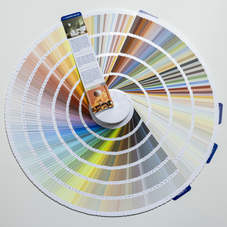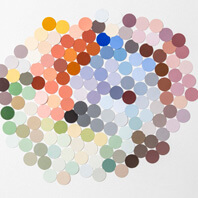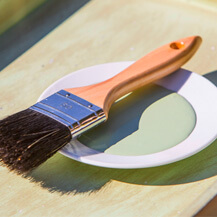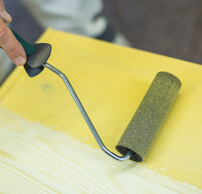Walls and ceilings
Which preparatory measures are necessary? What about the covering rate of wall paint? How can accurate transitions between different colours be achieved?
These questions concerning wall paint applications, and many more, are answered here.
'Washable' or 'scrub resistant' are established quality descriptions of water-thinnable surface coatings for walls and ceilings.
Two-tone walls usually with a horizontal divide between the top and the bottom part of the wall are very trendy. Masking the different parts with painter's tape is quite easy on smooth substrates but more difficult on granular plaster.
Problem: The paint will seep under the painter's tape...
Rooms exposed to high stress can be easily protected and individually designed at the same time with our robust Wall glaze wax no. 370.
Our merry, intense, luminous glaze paints with additional wax protection are the ideal solution for children’s rooms and hallways. Dilute the wax with water ...
Lime-based products are especially suitable for mineral substrates such as lime or lime-cement plaster. These types of plaster do not require any special pretreatment. They can be directly overcoated with all AURO lime products as these bond well with ...
Please observe the following when using the AURO smoothing technique: In addition to the desired lime tinting base, approx. 5-10 % of the gypsum-based Natural wall filler no. 329 should be added to the mixture for the first application.
First mix the desired amount of lime tinting base with water. When adding a higher amount of lime tinting base...
The application by wide paintbrush prevents typical brush marks when applying glazes to large surfaces.
The stippling technique creates lively depth effects on surfaces using a sponge.
The ragging technique is a method used for creating natural contrasts on a coloured substrate.
With stencils cut from cardboard you can transfer coloured patterns of your own design to surfaces.
But how do the techniques of brushing, stippling, ragging or stencilling work in practice? We show you!




